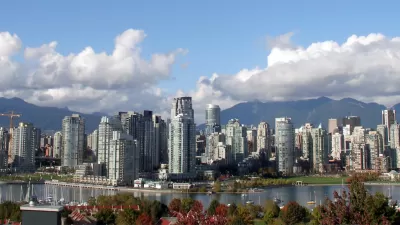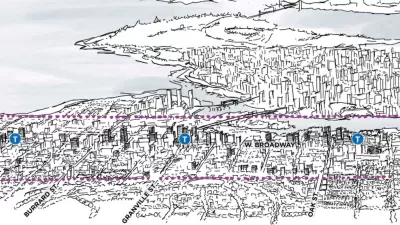In Vancouver, the presence of corner stores indicates diverse, dynamic, and affordable neighborhoods. But is the disappearance of such stores from neighborhoods across the city a sign that residential areas are becoming unbalanced?
Can an independent corner store still survive in Vancouver? And, if not, what does that imply about the state of the city's residential neighborhoods? These questions were the topic of a recent discussion led by Andy Yan, an urban planner for Bing Thom Architects.
"We might not give much thought to these oases in the urban desert, but their existence can improve a neighbourhood and raise property values," writes Kerry Gold. "Because they succeed best in areas with diverse incomes and urban density, they represent an equilibrium, the happy existence of a multi-layered community. There is a correlation between the corner store and affordable housing. They go together."
But in Vancouver, "corner stores are disappearing from neighbourhoods, with 82 per cent in non-residential areas," worrying planners, developers, and business owners alike.
“The corner store is a sign that things are in balance,” says Jake Fry, a director of non-profit Small Housing B.C. “There is something about income and the corner store and population — they have to be balanced properly. It really is the biggest telling thing of a dynamic neighbourhood. It’s like the canary in the coal mine.”
FULL STORY: Corner stores mean solid neighbourhoods

Alabama: Trump Terminates Settlements for Black Communities Harmed By Raw Sewage
Trump deemed the landmark civil rights agreement “illegal DEI and environmental justice policy.”

Planetizen Federal Action Tracker
A weekly monitor of how Trump’s orders and actions are impacting planners and planning in America.

The 120 Year Old Tiny Home Villages That Sheltered San Francisco’s Earthquake Refugees
More than a century ago, San Francisco mobilized to house thousands of residents displaced by the 1906 earthquake. Could their strategy offer a model for the present?

In Both Crashes and Crime, Public Transportation is Far Safer than Driving
Contrary to popular assumptions, public transportation has far lower crash and crime rates than automobile travel. For safer communities, improve and encourage transit travel.

Report: Zoning Reforms Should Complement Nashville’s Ambitious Transit Plan
Without reform, restrictive zoning codes will limit the impact of the city’s planned transit expansion and could exclude some of the residents who depend on transit the most.

Judge Orders Release of Frozen IRA, IIJA Funding
The decision is a victory for environmental groups who charged that freezing funds for critical infrastructure and disaster response programs caused “real and irreparable harm” to communities.
Urban Design for Planners 1: Software Tools
This six-course series explores essential urban design concepts using open source software and equips planners with the tools they need to participate fully in the urban design process.
Planning for Universal Design
Learn the tools for implementing Universal Design in planning regulations.
Clanton & Associates, Inc.
Jessamine County Fiscal Court
Institute for Housing and Urban Development Studies (IHS)
City of Grandview
Harvard GSD Executive Education
Toledo-Lucas County Plan Commissions
Salt Lake City
NYU Wagner Graduate School of Public Service




























